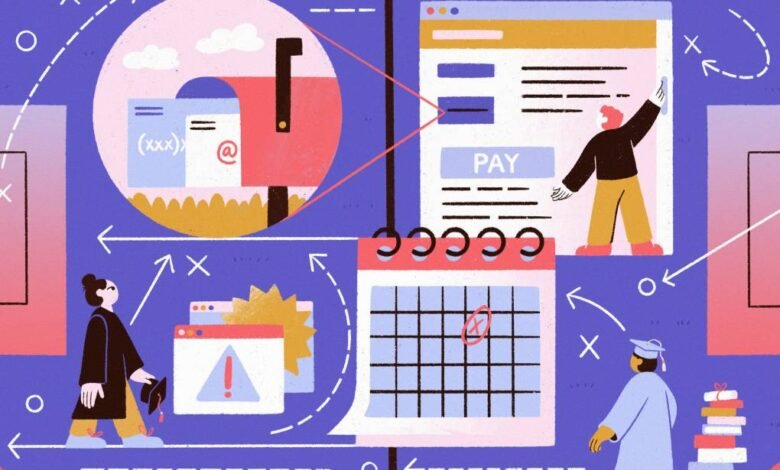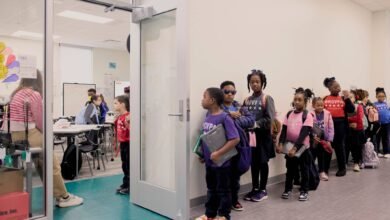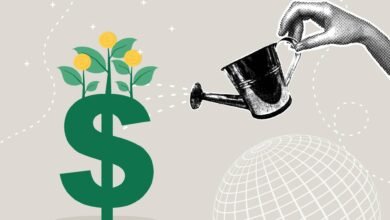
So keep an eye on your balance as always – millions of people have seen movement. It hasn’t been as flashy as the administration initially intended, but there has been targeted relief for borrowers with older loans, those with a heavy interest burden, people with lower incomes, those with disabilities, and public servants – close to 5 million people so far.
Transcript:
LEILA FADEL, HOST:
School may be out, but student loan borrowers should keep an eye on their balances this summer. On July 1, millions of borrowers could see their monthly payments cut in half. NPR’s Sequoia Carrillo joins us to talk about this update to the Biden administration’s SAVE program and some possible legal challenges. Good morning, Sequoia.
SEQUOIA CARRILLO, BYLINE: Good morning, Leila.
FADEL: So let’s start with the positive – monthly payments cut in half. Whose bills are going to change?
CARRILLO: This is a huge shake-up, and it’s one that’s been planned for a while. Student loan borrowers who are already enrolled in the SAVE plan will see this change for their undergraduate debt. It’s a program that benefits many low-income borrowers, but these changes will apply to all borrowers enrolled in the program.
Monthly payments are currently calculated to be 10% of your discretionary income, but in July, that number will drop to 5%. So no matter your income level, the payments will become more affordable. This only applies to borrowers with undergraduate debt, but it still should impact millions of people.
FADEL: Is there anything that borrowers need to do to qualify?
CARRILLO: No. If you’re one of the 8.5 million people already enrolled in the SAVE plan, you should have actually already received an email that your payments are paused in July while the department does all these recalculations. So just sit tight, and your August payment should reflect the new math. But if you aren’t enrolled in the program, you may still be eligible. Borrowers can enroll in the plan now before things are recalculated. The administration says that millions more people qualify for this plan than are enrolled.
FADEL: But – there’s always a but, right?
CARRILLO: Yep.
FADEL: In the form here of court cases challenging the plan?
CARRILLO: That’s right. Republicans in Congress have been fighting to stop SAVE. And recently, some states have jumped in. Many borrowers will end up paying far less over time on SAVE than they would have in old plans. Under this plan, borrowers pay back about $6,000 for every $10,000 they borrowed. And that’s a lot of savings for borrowers. And not everyone agrees that the federal government should be forgiving that much debt.
There’s a lawsuit in Texas and one in Missouri. The cases argue that student loan servicers are being denied interest on certain types of loans. The Missouri one is almost like deja vu. It’s the exact same legal argument that killed the administration’s debt relief plan back in 2022. And in talks with experts, it sounds like it’s possible the Missouri case will gain traction. But given the timing, it most likely won’t get in the way of this payment drop in July.
FADEL: So Sequoia, this is just a piece of what the administration has done to alleviate student debt, right?
CARRILLO: Yes. The Education Department says it’s already wiped away more than $7 billion in loans over the past few years. Even though broad debt forgiveness did fail in 2022, the administration has been chipping away at the nation’s $1.5 trillion student loan debt slowly but surely. Much of that has been without application or action from borrowers. Often borrowers would just log into their portal and see that the number had been slashed or, in some cases, was completely erased. So keep an eye on your balance, as always.
But there’s definitely been movement. It hasn’t been as flashy as the administration initially intended, but the targeted relief – so for borrowers with older loans, lots of interest or lower incomes, also borrowers with disabilities or who work in public service – they’ve helped close to 5 million people so far. So it’s not insignificant progress by any means.
FADEL: That’s NPR’s Sequoia Carrillo. Thanks, Sequoia.
CARRILLO: Thank you.
Copyright 2024 NPR. To see more, visit https://www.npr.org.




